How to store apples a dozen different ways before and after you sliced them
We all love apples and some of us even have apple trees in our gardens. Many people like saving money by buying apples in bulk during the apple season or picking them in the orchards that offer this service. They are often asking: “How to store apples at home and how to keep cut apples fresh?”
No matter if you store apples long-term or not, there is one annoying problem with them – turning brown literally a few minutes after you slice them. Searching for “How to keep cut apples from browning?” will likely bring a list of mostly useless tips and solutions like soaking slices in orange juice or salty water.
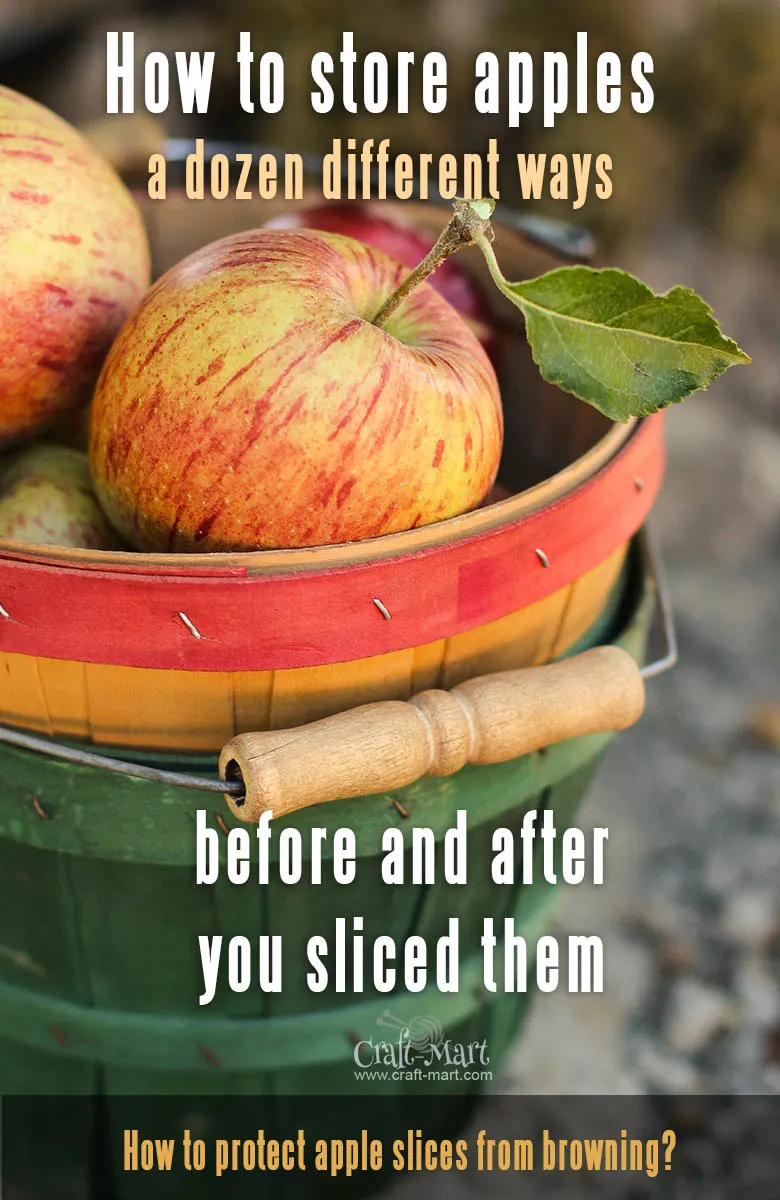
We recently planted a few apple trees and had our first apples last year. In this post, we’ll try to summarize all the useful information that we managed to find to help ourselves with both problems.
How to keep cut apples fresh?
First things first, right? We need to know how to slice apples before worrying about keeping pieces from browning.
The good thing is that you may cut them any way you want. The trick for keeping apples from turning brown is finding the best tools for slicing! Whatever you are going to use needs to be super-sharp!
The following two types of knives can be an answer to a very common question “How to keep apples from turning brown without lemon juice?“
The best apple-slicing tools:

1. Ceramic knife made out of Zirconium Oxide – (The best)
If you don’t want to deal with soaking cut slices in different homemade solutions then simply purchase a ceramic knife. These are extremely sharp and can be used for cutting all sorts of soft fruit like avocados and vegetables like lettuce to prevent browning without any additional effort.
You absolutely don’t have to purchase the most expensive ceramic knife set! Just make sure not to use them on anything hard like frozen meat with bones – the blades are extremely brittle. Stay with cutting soft bread, fruit, and veggies.
2. Sharp stainless steel knife
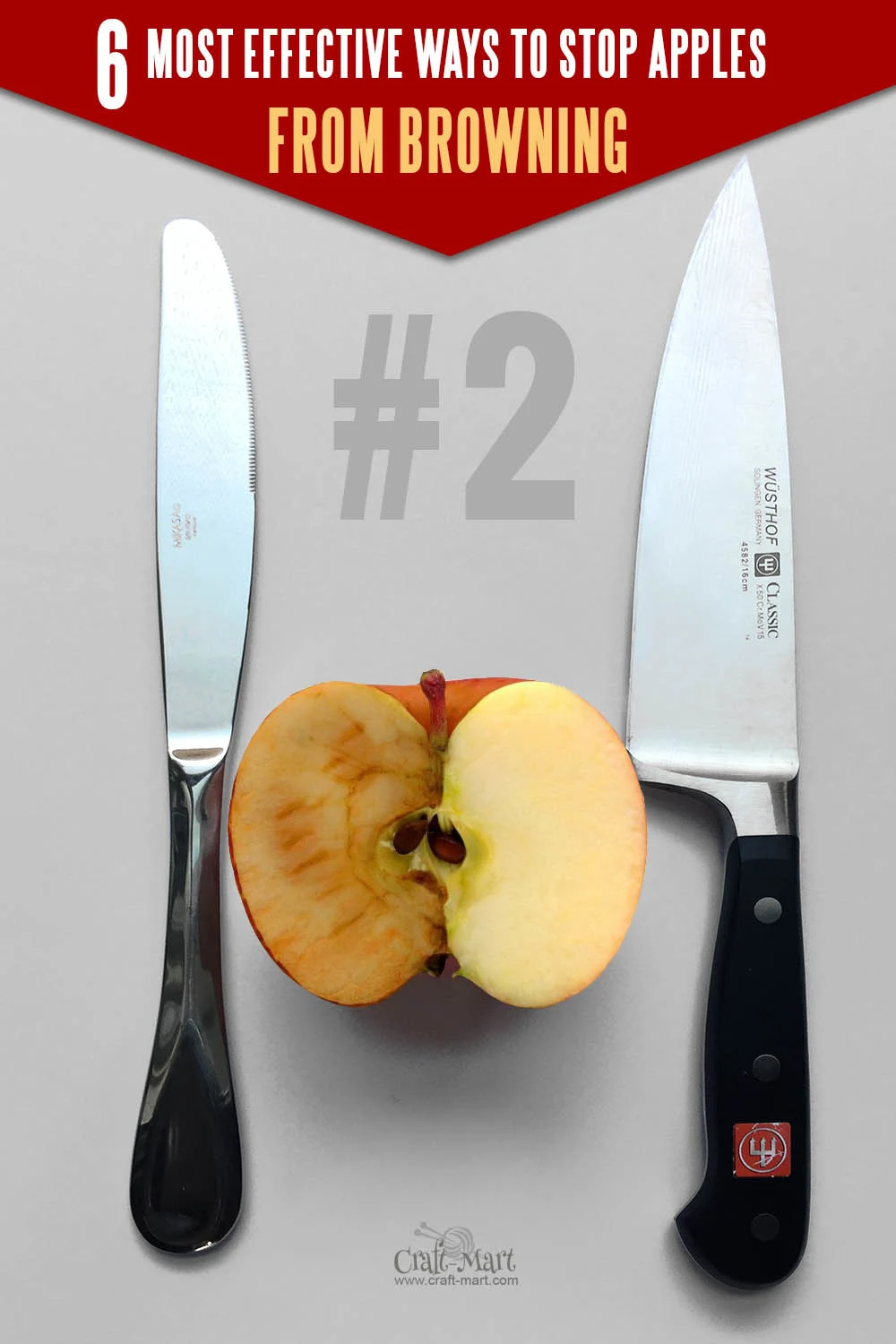
Stainless steel, on the other hand, reacts with acids in fruit and vegetables altering their taste and slightly oxidizing them. Of course, using a sharp German stainless steel knife will produce much better results than ripping your apple with dull silverware from your dining set.
In addition to that, if you’ll brush apple slices with lemon juice or sprinkle them with “Fruit Fresh” powder (Ascorbic acid with Citric acid) your apple slices may stay in perfect shape for many hours or even overnight.
Something like this 8-inch Chef’s Knife by J.A. HENCKELS INTERNATIONAL can make a noticeable difference in reducing apple slices from rapidly turning brown.
What else can keep apples from turning brown?
There are several popular recipes recommending soaking apple slices in all sorts of things from lemon juice and ginger ale to salty water or pineapple juice.

3. Ball Fruit Fresh Produce Protector – (the best)
This specially formulated powder naturally prevents browning of fresh-cut produce for up to 8 hours. It mostly consists of Ascorbic acid (vitamin C), citric acid, Dextrose, and silicon dioxide to prevent caking. It really does the job well plus it’s very easy to use without any extra preparations.
4. Lemon juice – (the 2nd best)
Yes, lemon juice turns out to be an effective remedy from keeping apples from turning brown. It is all due to the strong acidity levels and high ascorbic acid (vitamin C) content. It works almost as good as Fruit Fresh powder but squeezing lemons requires some extra work than just sprinkling the powder.
If you want to avoid Dextrose in your food and only use fresh natural ingredients, it is a better solution.
5. Ascorbic acid
As you noticed already, ascorbic acid is the main ingredient of the two previous anti-browning sliced apple recipes. It can be used dissolved in water to slow down the sliced apple oxidization process similar to lemon juice. Many of us don’t keep ascorbic acid at homes and just buy Vitamin C in caps.
One reason for considering purchasing and using ascorbic acid to keep apples from turning brown would be also using it for the de-chlorination of bathwater. The skin of small kids and older people can definitely benefit from taking baths without chlorine.
6. Ginger ale
Ginger ale has an acidic pH of 2.8 due to the relatively high concentration of carbonic acid, so it does prevent apple slices from browning but is a bit less effective than lemon juice.
7. Apple juice, Orange juice, Salty water, Plain water – (not effective)
All of the above apple anti-browning hacks are widely popular but not effective at all. The reason is the weak acidity of the above-mentioned juices and neutral pH of the water.
8. Treat and Keep in an Air-Tight Container
In conclusion, the last part of keeping apples from browning would be reducing the apple’s exposure to air after it’s been cut. After choosing a method and treating your apples, store them in an air-tight container or a zip-lock bag.
However, without cutting apples with a sharp knife and treating them with lemon juice, for example, air-tight containers may not do much to prevent browning.
How to store apples at home and keep them fresh for a long time

9. Don’t store apples and potatoes together!
All apples produce ethylene gas that will spoil the potatoes. Rotting potatoes give off a noxious solanine gas that can make a person unconscious if they’ve inhaled enough. This solanine toxin can cause vomiting, diarrhea, headaches, paralysis of the central nervous system, coma, and in rare cases, death.
Don’t experiment with storing apples and potatoes in the same closed space as some resources may suggest! If you have small kids, you’ll be playing with their health since only a small amount of solanine is enough to cause the damage to the child’s nervous system!
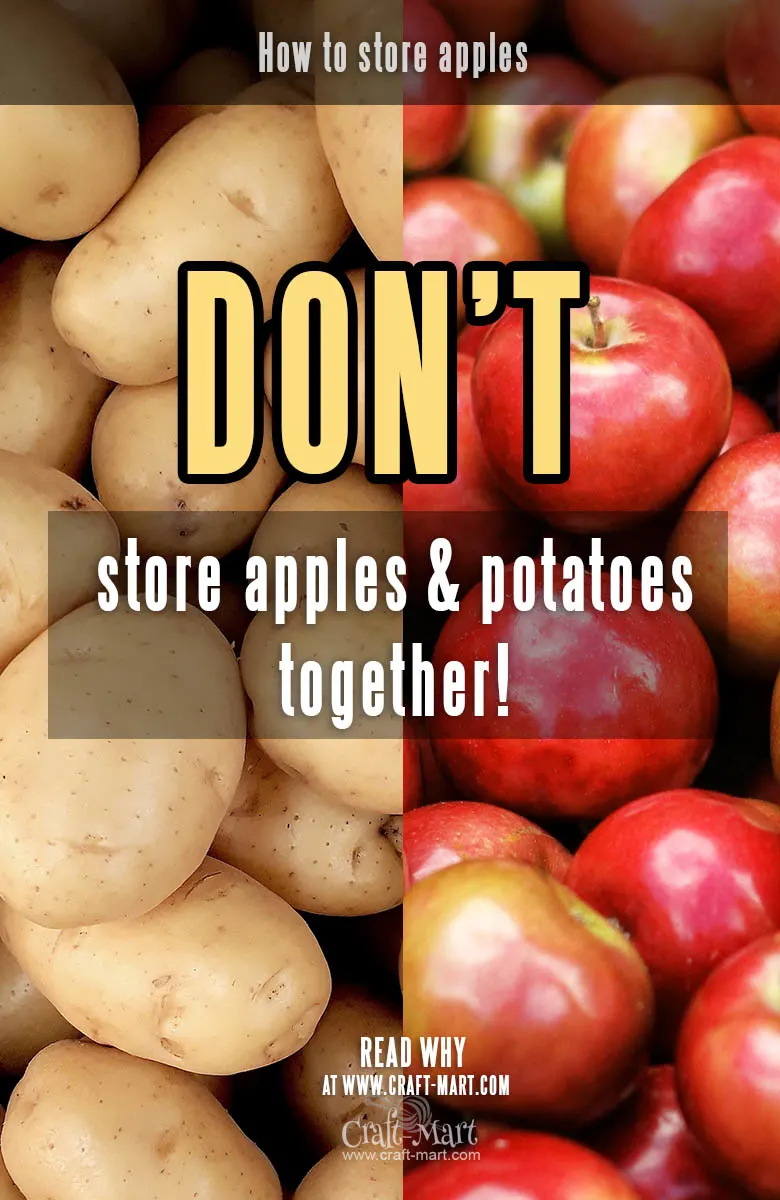
10. Choose the right kind of apples for long-term storing
The best apples for storing are hardy varieties that hold up well over time, like Fuji, Red Delicious, Granny Smith, and Gala, for example.
Why some apples are not good for long-term storing?
Apples as most other fruits produce a gas compound called ethylene that promotes the ripening process. Ethylene’s level of under-ripe fruit is very low. The level of ethylene and the rate of ripening vary for different types of apples.
Some apple varieties, such as McIntosh, produce abnormal amounts of ethylene and are almost impossible to store once this occurs.
11. Sort apples by size

In case you have a serious quantity of apples to store, consider dividing them by size groups.
Why would you bother with sorting them? The largest apples usually ripen and rot first, so your best strategy would be not to mix them with smaller apples and plan to eat them first.
You can easily make a template out of cardboard like the ones shown in the picture. Just make sure that the edges are not sharp and handle apples with care.
12. Pick only the ones without bruised or scratched skin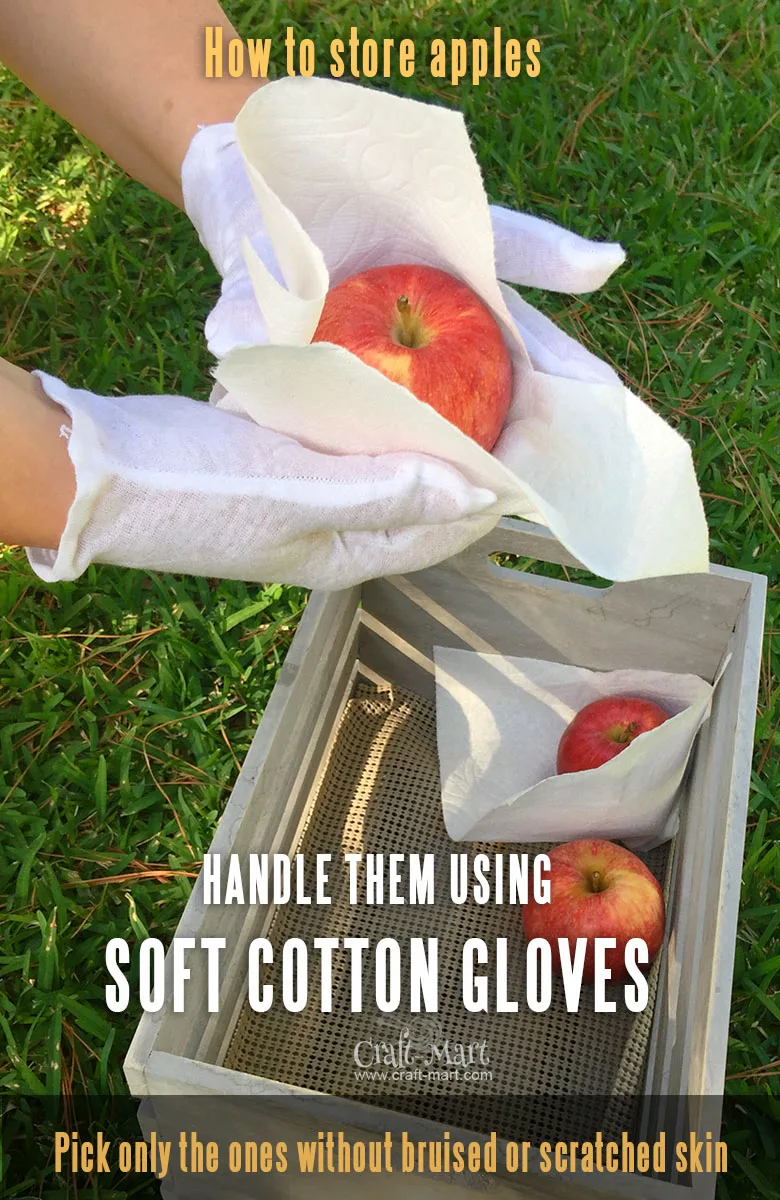
If you are picking your own apples try to use soft cotton gloves and avoid rubbing off a very thing natural wax-like layer on the apples’ skin. Nasty micro-organisms are able to find their way through damaged skin even if these scratches are barely visible.
Bruised apples clearly can’t be stored at all, so consider making preserves out of them right away.
13. Wrap them up in soft paper
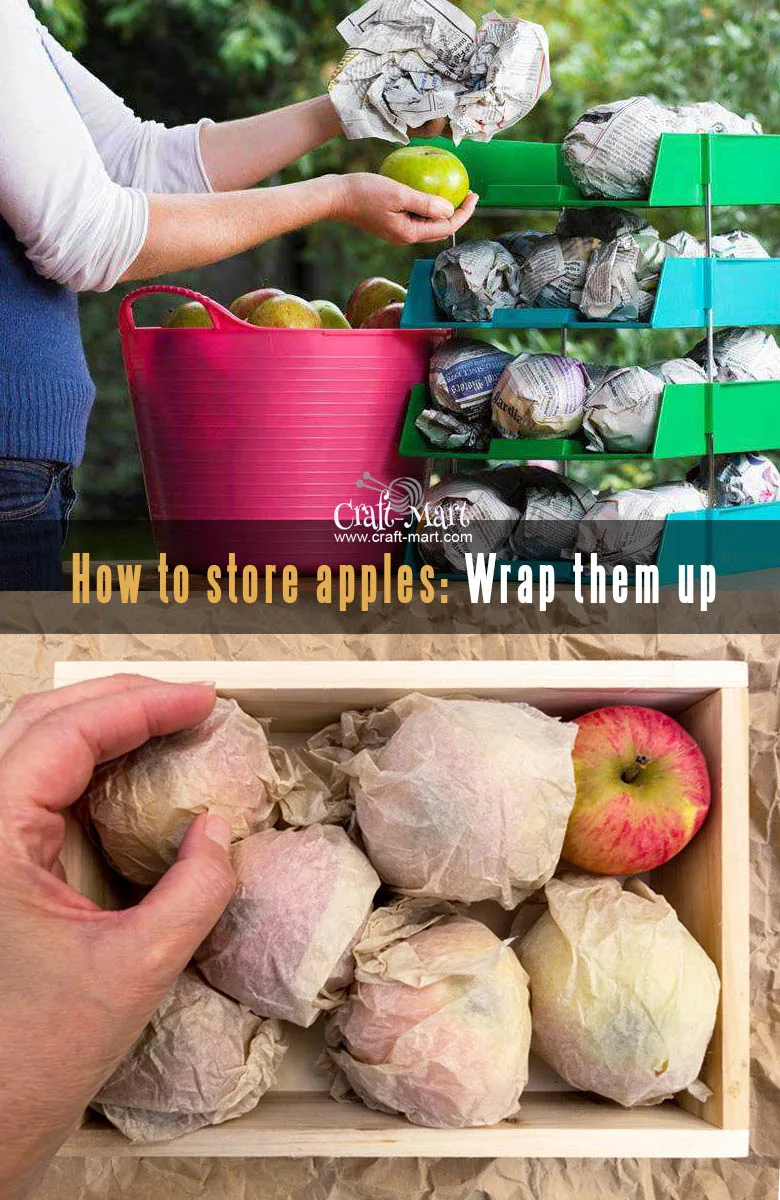
Protecting each apple individually by wrapping them in paper towels or soft tissue paper can significantly extend the storing time. Of course, you don’t have to wrap all your apples. If you don’t have a crazy number of apples to store, then simply put them in boxes or crates separated with the layers of straw.
14. Keep your apples cold
The perfect temperature for storing apples is between 33°F-38°F. The main purpose of the cold temperature in your storage space is preventing the activity of microorganisms. Don’t let the temperature drop lower than 32°F or you’ll have frozen apples that can only be used for smoothies.
15. Don’t let them dry out
A few top blogs give the recommendation to store apples in a cold and dry space. It’s easy to figure out the temperature range but the word “dry” can be interpreted in a few different ways. In our case, it simply means keeping apples without excessive moisture that can cause water to be condensed on the apple skin.
So, what are the best levels of humidity for storing apples?
We already know that the preferred humidity level for storing them in a refrigerator is close to 90%. This is a pretty high humidity level but since the temperature inside the crisp drawer is close to 33°F we don’t see mold growing there.
If your basement is much warmer than 38°F then your humidity levels can’t be as high as 90% or you’ll have a serious mold problem in a few weeks. The solution here would be keeping a lower than 90% level of humidity but not as low as in your kitchen, for example.
To accomplish that just put there a couple of flat pans (similar to the ones used for Thanksgiving turkey) filled with water. This way water will evaporate naturally creating the desired humidity for the current temperature. You may put a few drops of hydrogen peroxide in each pan for sterilization.
Can you successfully keep apples fresh and crisp in a cold room with the same humidity as your other house rooms? If we’ll keep juicy fruits or vegetables in a dry room they will eventually start losing moisture and will look like prunes. This is definitely not what you want…
16. Make yummy preserves out of slightly damaged apples
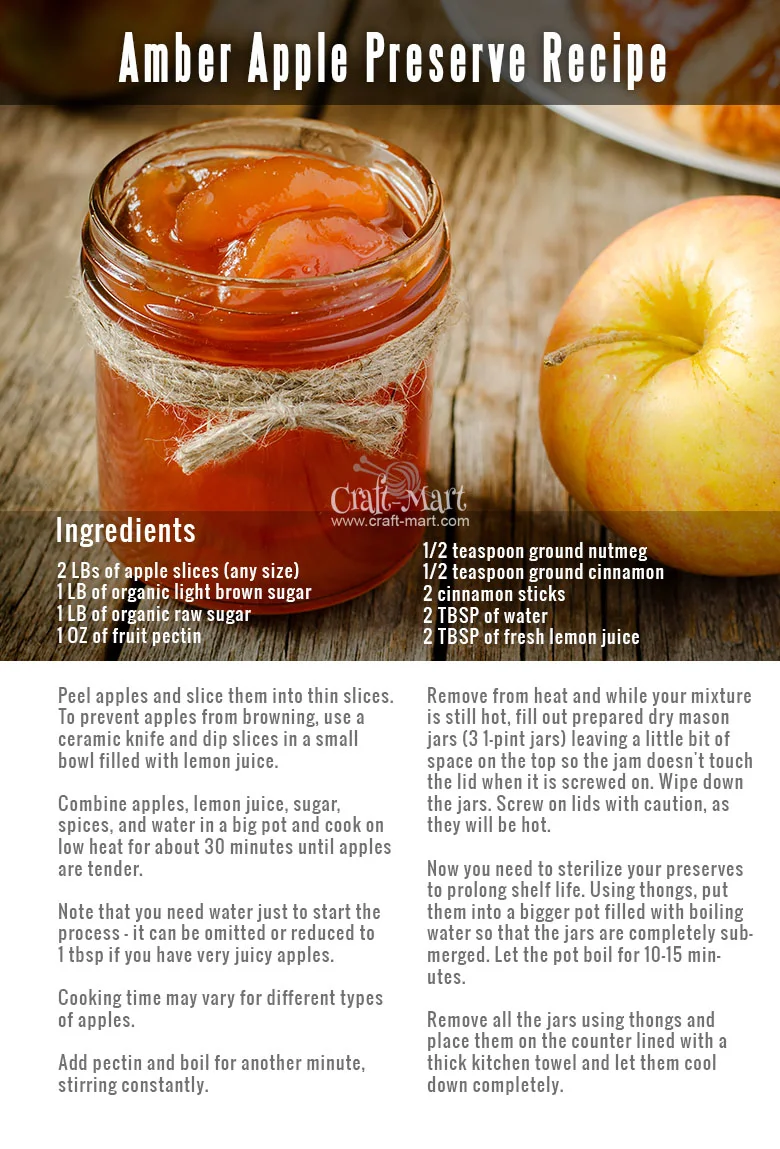
Amber Apple Preserve
If you have a great apple harvest and need to preserve your fruit, that recipe is a must. A classic apple preserve mixes a distinct amber color with a symphony of autumn spices to create a delicacy for your fall gatherings and holidays.
- 2 lbs apples (peeled)
- 1 lb organic raw sugar
- 1 lb organic light brown sugar
- 2 tbsp freshly squeezed lemon juice
- 0.5 tsp ground cinnamon
- 0.5 tsp nutmeg
- 1 oz fruit pectin
- 2-3 cinnamon sticks
- 2 tbsp water
-
Peel apples and slice them into thin slices. To prevent apples from browning, use a ceramic knife and dip slices in a small bowl filled with lemon juice,
-
Combine apples, lemon juice, sugar, spices, and water in a big pot and cook on low heat for about 30 minutes until apples are tender. Note that you need water just to start the process – it can be omitted or reduced to 1 tbsp if you have very juicy apples. Cooking time may vary for different types of apples.
-
Add pectin and boil for another minute, stirring constantly.
-
Remove from heat and while your mixture is still hot, fill out prepared dry mason jars (3 1-pint jars) leaving a little bit of space on the top so the jam doesn’t touch the lid when it is screwed on. Wipe down the jars. Screw on lids with caution, as they will be hot.
-
Now you need to sterilize your preserves to prolong shelf life. Using thongs, put them into a bigger pot filled with boiling water so that the jars are completely submerged. Let the pot boil for 10-15 minutes.
-
Remove all the jars using thongs and place them on the counter lined with a thick kitchen towel and let them cool down completely.
17. Keep your apples free of pathogens
This final part is important even if your apples were pre-washed. In short, any apples may have Listeria monocytogenes, a highly deadly soilborne pathogen that survives on fresh apples in storage. We don’t always wash our apples thoroughly and it easily can survive even a couple of light washes.
What’s the solution? Get one of the high-volume Ozonators like this one. It will take care of 99.99% of this nasty Listeria monocytogenes and even kill mold spores. Other Ozonator uses may include getting rid of unpleasant kitchen or cigarette smell, for example.
No one really knows how easily Listeria monocytogenes, a highly deadly soilborne pathogen, survives on fresh apples in storage and whether die-off changes by type of storage — refrigerated atmosphere, controlled atmosphere (CA), or CA with ozone.
Led by Mei-Jun Zhu, WSU associate professor in the School of Food Science, the study examined inoculated apples in both laboratory and warehouse settings, using Listeria inoccua, a nonpathogenic substitute for L. monocytogenes.
In 2015, Zhu inoculated 560 Fuji apples with L. innocua and transported them to a Washington packing house, then she examined the apples for 18 weeks in three different types of storage: RA, CA and CA with ozone at 70 to 80 parts per billion.
In all three storage situations, the apples saw a significant reduction in Listeria in the first six weeks and only a gradual reduction over the next 12 weeks. However, the biggest drop in those first six weeks came in the CA room with ozone, where apples saw an almost 99.99 percent reduction in bacteria levels — one step short of what would be considered a “kill step” in the industry.
We looked at different ways of storing apples before and after you cut them. Here is a short summary of some of the most frequently asked questions in case you don’t have time to read the whole post.
FAQs
How to store apples after cutting?
The most effective way to prevent sliced apples from browning is by using a very sharp ceramic knife. You also can use sharp metal knives in combination with ascorbic acid (vitamin C) or lemon juice. Keep sliced apple pieces in an air-tight container or a zip-lock bag.
Should you wash apples before storing them?
Apples have a natural thin layer of wax-like substance on their skin, so washing them before any long-term storing is not recommended. Apples with noticeable dirt can be gently washed under running water and air-dried. Keep apples cold—close to but not below 32°F.
Do apples stay fresher in the fridge or on the counter?
The best way to store apples is to keep them in a cold place like a refrigerator. Be sure not to let the temperature drop below 32°F or 0°C! To keep apples fresh use high-humidity drawer and set it at a 90% level or closer to the Max. When apples are stored on the counter they may begin to rot and dry out at the same time. The reasons are the warm temperature and low humidity. The normal humidity inside our homes is between 30% and 50%.
What is the best way to store apples for winter?
To store apples for winter you need to sort them first. Group undamaged apples into 2-3 size groups and put them in a cool shed, basement, garage, or refrigerator. Wrapping each apple in paper towels or soft tissue may also help to keep apples fresh longer. The preferred storage temperature is 33°F-38°F with ~90% humidity.
Why does lemon juice prevent cut apples from turning brown and vinegar doesn’t?
Vinegar sold in the US has on average lower acidity ( 2.4-3.0 pH) than a fresh lemon juice (2.0-2.5 pH). The acid in lemon juice inactivates the enzyme called polyphenol oxidase which is the main cause of browning. Lemon juice is also full of ascorbic acid (an isolate of Vitamin C) which acts as a preservative.
Additional information:
Study: Effect of ozone on qualities of fruits and vegetables in cold storage


